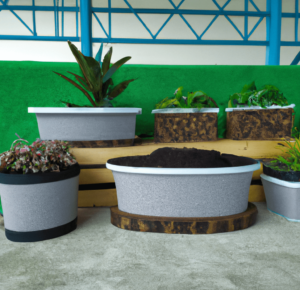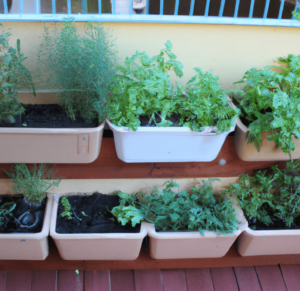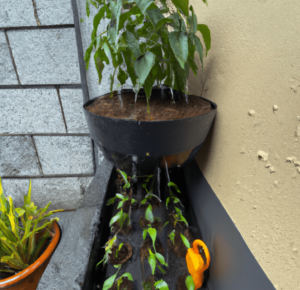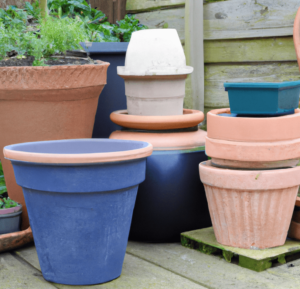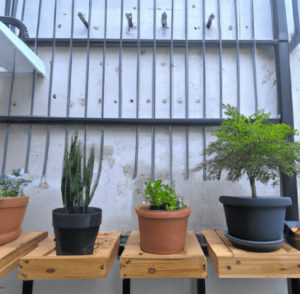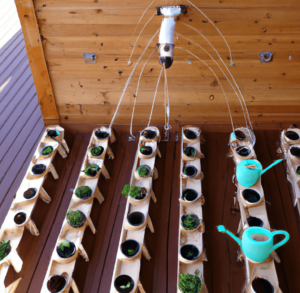The role of pot size in plant growth and development gardening, especially those grown for therapeutic or recreational purposes, has long been recognized by plant experts. The volume of the container used to cultivate a plant is referred to as the pot size. Numerous elements of plant growth and development, including the size and health of the root system, nutrient uptake, water retention, and ultimately the size and quality of the plant, can be influenced by the size of the pot. This article will right into the role of pot size in plant growth and development!
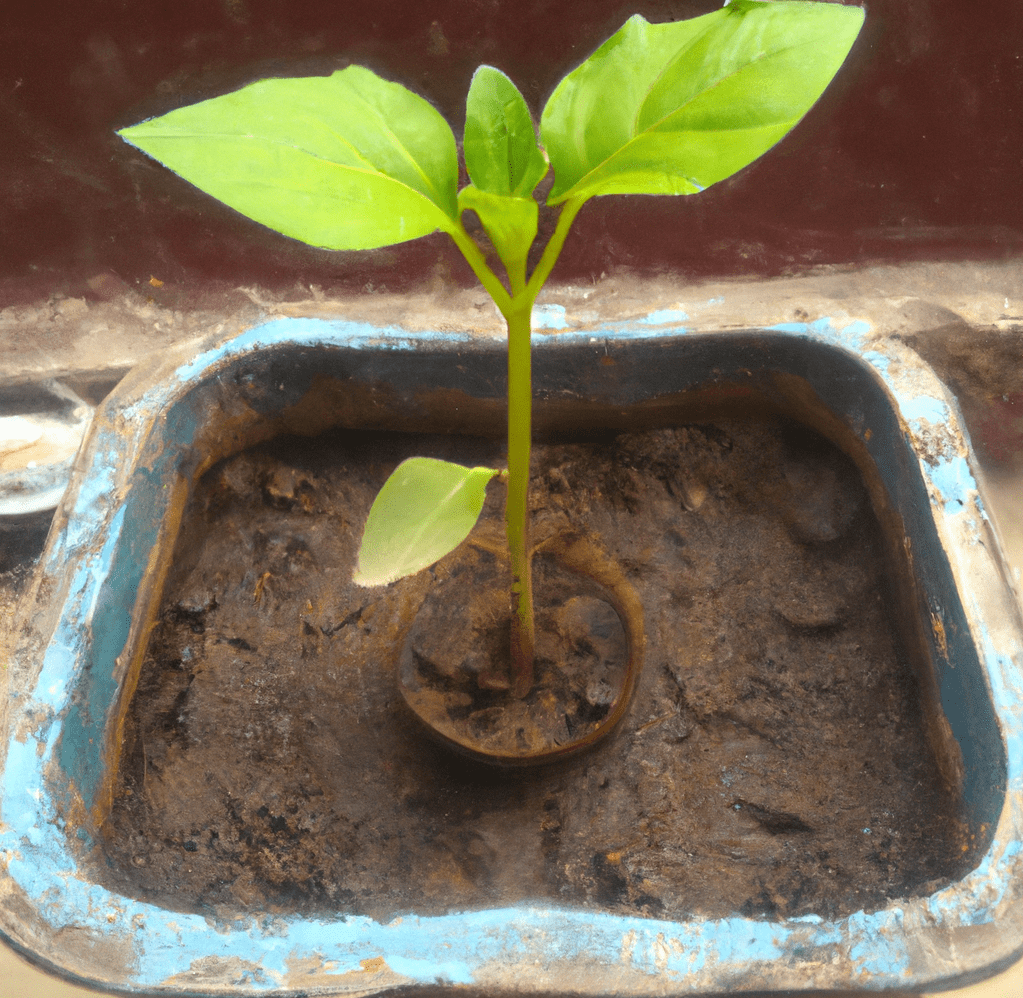
How Pot Size Affects Plant Growth
While understanding and using different types of container materials in your garden are important, the role of pot size in plant growth and development can be seen in the following:
- Effect on Root Growth: Plants’ root development can be considerably impacted by the size of the pot. The roots of plants that are cultivated in containers that are too tiny may get constrained and crowded, stunting growth and making the plant in general weaker. On the other hand, when plants are grown in overly big pots, the roots may become soggy and struggle to effectively absorb nutrients. Therefore, choosing the proper pot size is essential for the plant’s healthy growth.
- Effect on Blossoming: Plant flowering can also be affected by the size of the pot. A plant may not have enough room in a pot that is too tiny for it to produce a strong root system. A lack of nutrients and water may result from this, which may impair the plant’s capacity to produce flowers. On the other hand, if a plant is grown in a pot that is too big, it may prioritize growing roots over flowering, which will cause a delay in flowering.
The ideal pot size for a plant depends on its size, rate of growth, and the desired result, according to scientists. Generally speaking, it’s ideal to select a pot that is a little bit bigger than the plant’s existing root system because this will provide the roots room to expand and absorb nutrients while preventing waterlogging.
How the Size of a Pot Can Affect a Plant’s Root System, and How This, in Turn, Can Affect the Plant’s Overall Growth and Development.
As experts know, the role of pot size in plant growth and development is vital. An important factor in a plant’s overall health and vitality is its root system. Therefore, the plant’s root system and ultimately its growth may be considerably impacted by the size of the pot in which it is cultivated.
A plant’s roots become entrapped when it is cultivated in a container that is too small. This indicates that there is no more room for the roots to spread because they have filled the pot. When this occurs, the roots may start to encircle the pot in circles, and become densely packed and crowded.
A plant that is root-bound will have difficulty absorbing nutrients and water because its roots are too closely packed to do so effectively. The plant’s growth will be slowed as a result, and it might even start to wilt and die. The surplus soil, on the other hand, can retain too much moisture when a plant is planted in a pot that is too big, which can cause waterlogging and root rot. If the root system is not sufficiently developed to cover the entire area of the pot, the plant may also have trouble absorbing water and nutrients.
Discuss the Importance of Selecting the Right Pot Size for a Specific Plant, and How to Determine the Appropriate Size.
Aside from choosing the type of planter you need, like using a biodegradable one because of its benefits, the size of the container has a big impact on a plant’s development, health, and general well-being. Selecting the appropriate pot size is essential for a plant’s growth, root development, and flowering, according to various studies undertaken by scientists to examine the impact of pot size on plants. Numerous aspects need to be taken into account when choosing the right pot size for a particular plant after learning about the role of pot size in plant growth and development:
- The size of the plant should be taken into account first. According to a general guideline, the pot should be between one-third and half as big as the plant. Nevertheless, this guideline could change based on the kind of plant.
- The kind of soil the plant requires is another thing to take into account. Plants needing well-draining soil often need a shallower pot with a larger drainage hole. On the other hand, plants that need soil that retains moisture often need a container with a deeper depth and a drainage hole that is smaller.
- Last but not least, it’s critical to think about the environment in which the plant will develop.
Factors to Consider When Selecting Pot Size
When you’re choosing planters after learning about the role of pot size in plant growth and development, keep the following in mind:
- Growth rate: Knowing your plant’s growth rate is vital since it will help you choose a pot that will allow your plant to reach its maximum potential. Different plants grow at different rates. Others grow slowly and can be grown in smaller pots, while some plants develop quickly and need larger pots.
- Details about the roots of the plant: The size of the plant’s root system should be taken into consideration while choosing the pot size. A smaller pot will do if the plant’s root system is not extensive. However, a larger pot will be required to fit the plant if its root system is extensive.
- The container’s depth: For plants with extensive root systems, container depth is crucial. The root system may not have enough room to expand correctly in a shallow pot, which can restrict the plant’s growth.
- Environmental factors: It’s important to consider the environment in which the plant will be cultivated. Larger pots may be necessary for plants cultivated in hot, dry environments, whereas smaller pots may be necessary for plants grown in colder environments to avoid waterlogging.
- Do research: Numerous research has been carried out to ascertain the ideal pot size for various plants. It’s worthwhile to conduct some studies to determine the ideal pot size for your particular plant.
You may choose the ideal pot size for your plant by taking these elements into account, ensuring that it thrives and develops to its maximum potential.
The Factors That Should Be Considered When Selecting a Pot Size, Such As the Size and Growth Habits of the Plant, the Amount of Light It Will Receive, and the Climate in Which It Will Be Grown.
The appropriate container size can significantly impact the growth and health of plants when it comes to growing. To give your plants enough room to grow, enough nutrients, and excellent drainage, you must select the right size pot for them. Here are some things to take into account when choosing a plant pot size after learning about the role of pot size in plant growth and development:
- Size and Growth Habits of the Plant: The size and growth habits of the plant are one of the key elements to take into account when choosing a pot size. While some plants may grow in large containers due to their deep roots, others can do so because of their shallow roots. Choose a container that can hold the plant’s future growth after taking into account its mature size. You might need to select a larger container if the plant is a fast-growing species to avoid it from getting root-bound too soon.
- Light: Selecting the right pot for a plant depends in part on how much light it will receive. If the plant needs direct sunshine, a larger pot with more soil to hold moisture and nutrients may be beneficial. It can be sufficient to use a smaller pot if the plant needs only partial or indirect sunlight. Make careful to choose a container size that can help regulate the soil’s temperature and moisture content because the amount of light also impacts how warm the soil is.
- Climate: While plants cultivated in humid environments would need a smaller container to avoid waterlogged soil, those grown in hot, dry environments will need more soil to retain moisture and endure the heat. Additionally, a larger pot may be advantageous for plants cultivated in colder locations in order to increase insulation and prevent freezing.
- Containers: The kind of container you select might have an impact on how well your plants develop. The soil dries out more quickly because some materials, like clay and terracotta, can absorb water. However, plastic and glazed ceramic containers are superior at holding moisture. Make sure the container is made of a sturdy material that can support the weight of the plant and its soil, and that it has adequate drainage holes.
Pot Size and Root Growth
The size of the pot has a significant impact on the expansion and development of plant roots. For successful gardening, farming, and plant cultivation, it is essential to comprehend the link between pot size and root growth. Numerous research has shed light on the relationship between pot size and root development, root system size, and general plant health.
The size of the pot has a big impact on how quickly roots grow. In smaller containers, roots may even become root-bound, where they have outgrown the pot and are intertwined, preventing growth, or they may grow more slowly. This is so that there is less room for root development and less water and nutrient availability in the pot.
Larger pots, on the other hand, provide roots greater room to spread out, which can hasten root growth and produce larger root systems. Another crucial aspect that’s impacted by pot size is the size of the root system. A bigger container might provide the roots more room to stretch out and take up more water and nutrients.
On the other hand, smaller pots restrict the root system, which causes nutritional and water deficits that can be detrimental to the health of the plant as a whole. The size of the pot also has an impact on the plant’s general health. Due to a plant’s restricted access to water and nutrients, root-bound plants may experience stunted growth, withering, and leaf loss. On the other hand, a plant with enough root room can flourish and develop strong growth above ground. All of these things play their part in the role of pot size in plant growth and development.
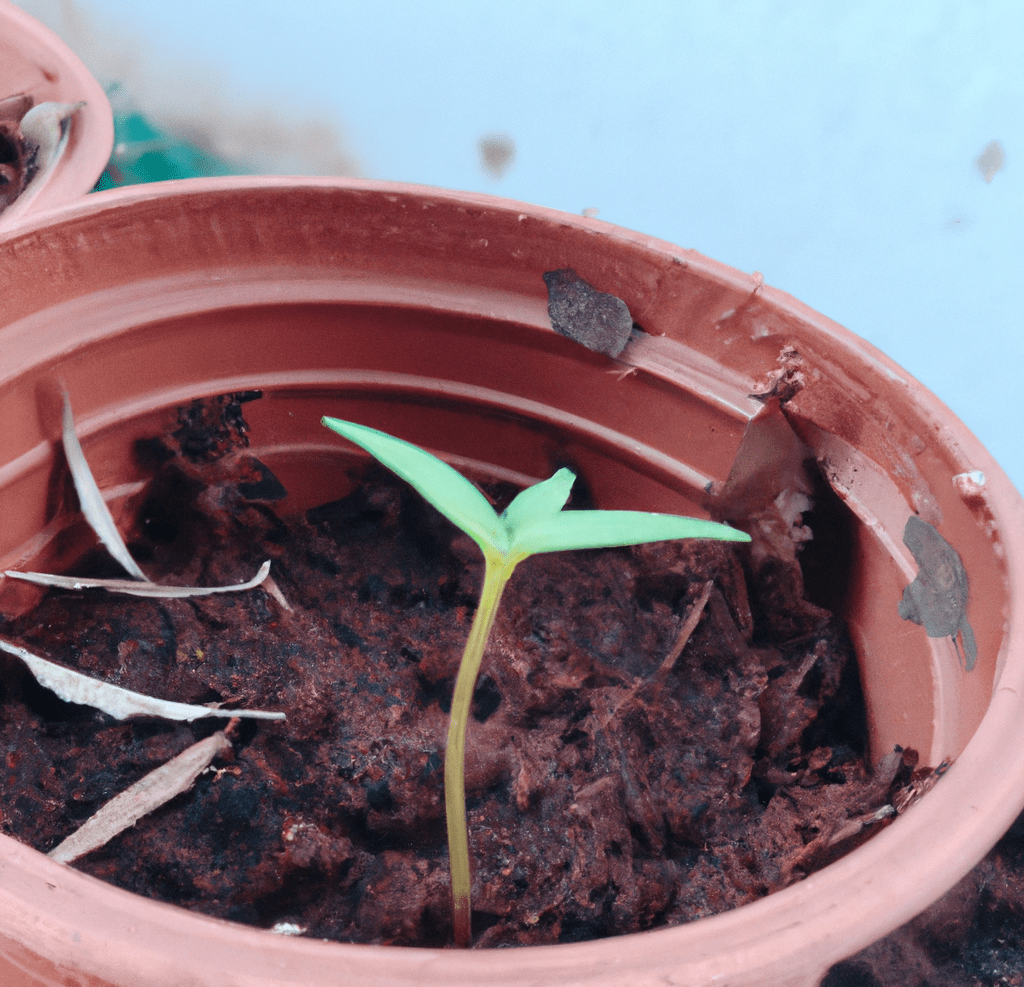
Tips on How to Encourage Healthy Root Growth, Such As Proper Watering and Fertilization Practices
As you’re learning more about the role of pot size in plant growth and development, here are some of our tips!
Watering Practices
Plants need the right amount of irrigation to produce strong roots. The growth of roots can be negatively impacted by either overwatering or underwatering. Here are some pointers regarding appropriate irrigation techniques after you learn about the role of pot size in plant growth and development:
- Give your plants a good, deep watering. Make certain the root zone receives the water. Root growth that is shallow can result from shallow irrigation.
- Before you rewater the soil, let it slightly dry out. Waterlogged soil from excessive watering can suffocate roots and impede their ability to thrive.
- Don’t spray water on the plant’s leaves. Wet leaves can promote the development of fungi that can harm the roots.
Correct Fertilization Technique:
In order for plants to have strong roots, proper fertilization procedures are also essential. The nutrients that roots require to develop and thrive are provided by fertilizers. As you dive into the role of pot size in plant growth and development, here are some fertilization tips:
- Use a fertilizer with a balanced ratio of potassium, phosphorus, and nitrogen. These nutrients are necessary for strong root development.
- Pay close attention to the fertilizer package’s instructions. Just as detrimental as under-fertilization is overfertilization.
- Don’t fertilize the leaves of the plant; instead, fertilize the soil surrounding its roots. This will guarantee that the nutrients reach the roots where they are required.
Containers
When it comes to encouraging good root growth, container gardening can present some special obstacles. When you’re choosing containers after learning more about the role of pot size in plant growth and development, keep the following in mind:
- To prevent water from accumulating and drowning the roots, make sure the container includes drainage holes.
- Pick a container that will allow the plant’s root system to expand. A plant’s size and health can be constrained by a container that is too small, which can also hinder root growth.
- Use a premium potting mix made specifically for container planting. These mixtures are designed to offer the drainage and aeration that roots require to develop.
Whether your plants are planted in pots or the ground, you may stimulate healthy root growth by adhering to these recommendations for regular watering and fertilization techniques. Plants with vigorous growth and abundant yields will result from healthy roots.
Bottom Line: The Role of Pot Size in Plant Growth and Development
For a long time, plant scientists have been interested in the role of pot size in plant growth and development. Plants need the correct atmosphere to thrive and yield the intended results, whether they are grown for aesthetic or medical purposes.
One of the most important elements in determining plant growth and development is root development. While a pot that is too large might result in overwatering and other issues, a pot that is too tiny will impede root growth and restrict the plant’s ability to absorb nutrients and water. The appropriate pot size depends on the particular plant species and growing conditions, according to recent studies, which have shown that pot size can have a considerable impact on plant growth and development.
According to data, plants cultivated in the proper container size can give greater yields, more substantial root systems, and larger blooms.
The Role of Pot Size in Plant Growth and Development FAQs
What is the role of pot size in plant growth and development?
The pot size, which refers to the volume of the container used to cultivate a plant, can have a big impact on a lot of different aspects of plant growth and development, like the size and health of the root system, nutrient uptake, water retention, and finally the size and quality of the plant. Plant specialists have long acknowledged the importance of pot size in gardening, especially for medicinal or recreational purposes.
What impact does a pot’s size have on a plant’s growth?
Plant growth can be impacted by the pot’s size in a number of ways. The roots of plants grown in inadequately sized pots may get congested and restricted, slowing growth and weakening the plant. Overly big pots can cause roots to get waterlogged and difficult to absorb nutrients, which forces plants to focus on growing roots over flowering, which can delay flowering.
How’s a plant’s root system be affected by the size of a pot?
A plant’s roots may become entangled, begin to ring the pot, and become tightly packed and congested if it is planted in a container that is too tiny. Because it will be difficult for the plant to absorb nutrients and water while it is root-bound, it may grow slowly or even perish. The surplus soil, on the other hand, can retain too much moisture if a plant is planted in a pot that is too large, which can cause waterlogging and root rot.
How do you decide which plant needs what size pot?
You should take into account a number of variables when choosing the right pot size for a specific plant. Important considerations include the plant’s size, the type of soil it needs, the environment in which it will be cultivated, as well as its growth rate and root system. The pot should, in general, be between one-third and half as large as the plant, though this recommendation may vary depending on the species. While plants that require soil that holds moisture frequently demand a container with a deeper depth and a smaller drainage hole, those that require well-draining soil frequently require a shallower pot with a larger drainage hole. Container depth is essential for plants with thick root systems, and it’s important to take into account the environment in which the plant will be grown.


